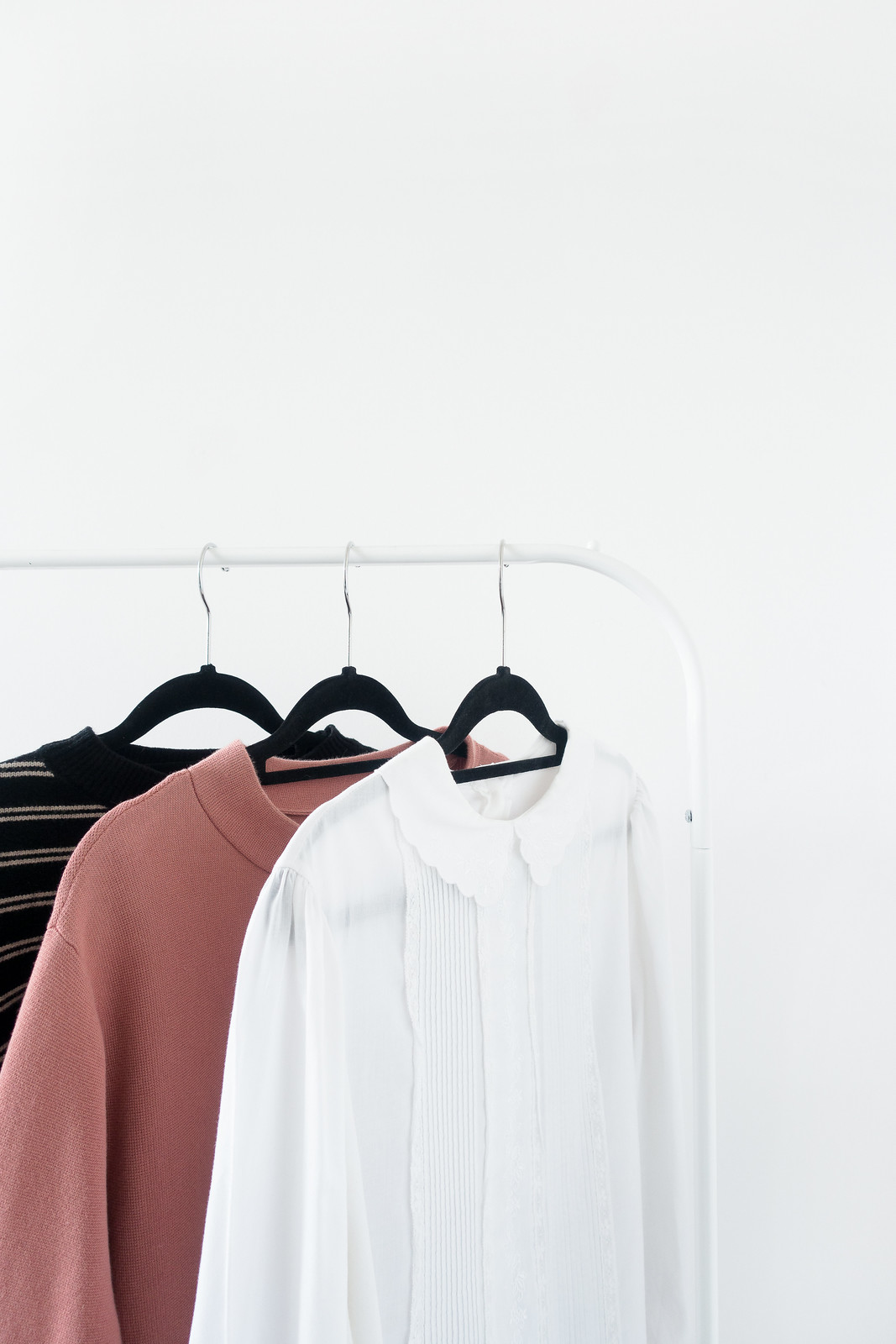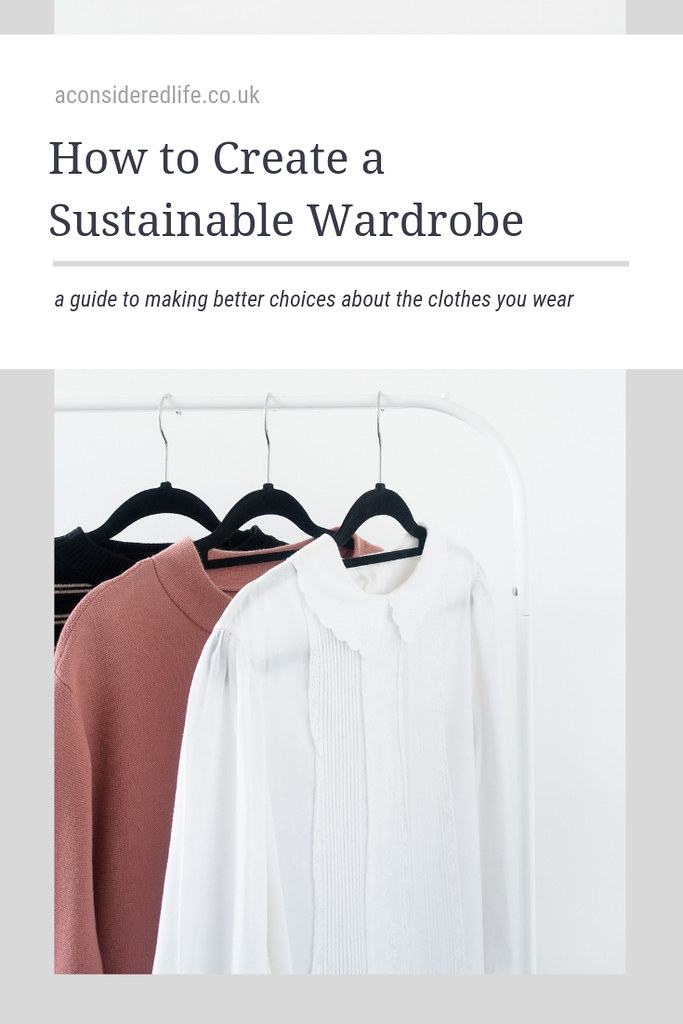
When fashion is fast, disposable, and cheap it results in a toxic combination that exploits our environment, the workers, and the consumers. The burden it puts on our planet is astronomical and unsustainable. As we become increasingly aware of the damaging effects fast fashion has on our planet there's an eagerness to adopt more earth-friendly habits from the brands we support to the clothes we buy.
Creating a sustainable wardrobe isn't difficult and doesn't have to be expensive. But making the shift can be overwhelming if you're unsure of where to start. Ultimately it involves a shift in your mindset and a willingness to change habits. Hopefully this guide to creating a sustainable wardrobe will help guide you in making considered choices so that you can shop more sustainably for clothing in the future.
Wear Your Wardrobe
The most ethical wardrobe is one that is used, loved, and worn. The best way you can make your wardrobe more conscious is to love what you’ve got and take care of what you own. Most of us only wear 20% of our wardrobe on a regular basis so instead of shopping for new clothes, shop your existing wardrobe. Use what you have and wear what you own to rework previously ignored pieces into new outfits. A challenge like Project 333 or the 10x10 wardrobe will help refresh your style and make you feel excited about your wardrobe again. If you've fallen for the lure of capsule wardrobes, make one using what you already own and refine your style to create a wardrobe you'll wear all year. If you don't wear something, declutter your wardrobe and pass the clothes on to someone who will wear them.
Even with a relatively small wardrobe, I can fall into the habit of wearing the same few outfits repeatedly. I've made it a habit to go through my wardrobe regularly, particularly when I'm considering making a new purchase, and trying out new outfit combinations. It helps rediscover pieces and fresh ways to wear them, and this practice helps avoid impulse purchases.
Shop Less
Considering we don't wear most of what's in our wardrobes, it's safe to say we don't need more clothes; we need less. We discard 90% of our purchases within 6 months and throw away 300,000 tonnes of clothing each year. Changing our shopping habits is crucial when creating a sustainable wardrobe.
I used to be someone who would shop for clothes on a weekly basis. I'd always be ordering something new online and was forever decluttering my wardrobe only to fill it back up again a few months later. It's a habit so many of us find ourselves getting stuck in. When clothes are so cheap it's easy to buy a lot of them without realising the long term costs. If we break the habit by shopping less and investing in higher quality clothing we find ourselves with a more satisfying wardrobe.
Fast fashion has enticed us into a "buy-and-toss" cycle where we buy frequently and discard quickly. Clothing is produced in high volumes, quickly and cheaply, using methods that threaten natural resources and damage the social and ecological environment and changing the way we shop and dress. These clothes are poorly made and trend-led, turning clothes into disposable goods. Our relationship with fast fashion is unsustainable; we buy too much and discard too quickly. For our wardrobe to be sustainable we need to make fewer purchases of higher quality, shop second-hand as much as possible, and avoid fast fashion brands as much as possible. If you do need to make a new purchase, here's a guide to second-hand shopping and a directory of sustainable fashion brands.
Mend Clothing
Take care of the clothes you have by maintaining your wardrobe; you'll feel better about your style when every piece you wear is in good condition. When the items in your wardrobe are missing buttons or have the beginnings of a hole forming, it's frustrating and makes you dislike your clothing. Frayed hems, loose stitches, and dangling buttons can all be repaired with a little time and basic sewing knowledge, and clothing can be refreshed with fabric dye to make the colour more vibrant. Make it a habit to care for your clothes properly and store them correctly to avoid unintentional damage. Whenever you notice small repairs need doing, put the clothes aside and make time to fix them, it can feel incredibly rewarding.
Even with minimal sewing skills, I'm able to repair small tears and holes, secure loose buttons, and make frayed hems look more presentable. I've even learned tricks for taking in waistbands and dying clothes. If you're a complete novice, there are plenty of sewing tutorials online; with a little bit of practice and a basic sewing kit you'll be able to mend your own clothing.
Buy With Intention
Making choices that suit your lifestyle and match your budget is tricky and fraught with pitfalls. Whether you're adopting a minimalist approach to your style with a capsule wardrobe, an environmentalist vegan wanting to make the best decision for the planet and the animals, or trying to reduce your waste with a low impact habits, buying with intention and making considered purchases can be a challenging balancing act.
Decide on your values and priorities. Perhaps it's important for you to ensure the products you buy are Fairtrade or organically grown; your focus might be on avoiding cruelty with vegan-friendly products; maybe supporting local businesses with independently made or second-hand products are the most important to you. Whatever your values, use them to guide your purchases.
I focus on delaying purchases until I'm absolutely certain I need something. When making my decision my number one priority is to first find a second-hand option. Otherwise I look for a cruelty-free, vegan-friendly option that's eco-friendly sustainably made. Everyone's priorities and values are different but identifying what's most important will help you to make decisions that are consistent with your beliefs.
If you're struggling to change your shopping habits, it can be useful to unsubscribe from fast fashion mailing lists, keep a wishlist and give yourself at least 24 hours before making a purchase, and learn where to shop for sustainable and eco-friendly clothing.
Make Some Rules
Creating a sustainable wardrobe long term requires us to permanently change our approach to fashion. A useful tactic is to set some rules so we continue to shop sustainably, buy with intention, and avoid fast fashion habits. Know your weak points and set some rules to help you reinforce them. If you're someone who shops regularly and buys a lot of clothes, it might help to try a shopping ban to break the habit. If you own a lot of clothes already, a style challenge can help you to appreciate what's already in your wardrobe. Consider setting a budget and adopt the practice of looking for items you need second-hand before buying new. For me, I focus on thrifting for the clothing I need, avoiding synthetic materials and only buying eco-friendly fibres, and, if I do need to buy something new, I shop from sustainable brands. There are so many different ways we can make rules for our shopping habits that enable us to maintain a sustainable wardrobe without sacrificing style.
